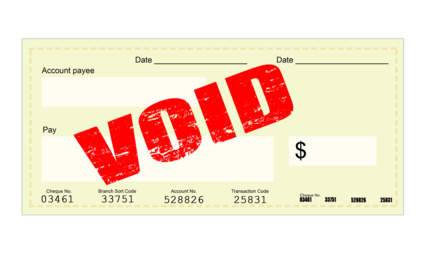A Full Guide on How to Calculate Income Tax On A Pay Check
Pay stubs are essential documents, and they hold a lot of information regarding your earnings. You can use them as proof of income, and you can also estimate tax returns with the last pay stub. They show the gross earnings of an individual, tax withholdings, vacation balances, and net income. The gross pay is the total amount you earn before any deductions are made for the pay period, weekly, monthly, etc.
The net income is the amount you take home after all the deductions and withholdings. An employer needs to calculate the withholding tax to know the amount of money each employee takes home and how much goes to the Internal Revenue Service (IRS) as a tax payment. While the process may sound complicated, it’s not.
This article is a simple guide on how to calculate income tax on a paycheck.

- Step 1: Filling the Form W-4
- Step 2: Calculate the gross pay
- Step 3: Calculate overtime
- Step 4: Adjusted gross pay for social security wages
- Step 5: Calculate Federal Income Tax (FIT) withholding amount
- Step 6: State income tax withholding
- Step 7: Local income tax withholding
- Step 8: Federal Insurance Contributions Act (FICA) withholding
- Step 9: Totaling it all up
- Filing income tax
- Takeaway
Step 1: Filling the Form W-4
The IRS requires all US workers to fill and sign Form W-4 when they get hired and when their finances change due to marriage, divorce, children, etc. The form contains valuable information that ensures that the employer correctly calculates income tax and other deductions.
Apart from the name and address of the employee, it holds additional information that can affect the withholding amount, like another income source. Notably, the IRS made changes to the form with effect from January 1, 2020. Ensure you have the correct version of the form with 2020 written in the upper right corner.
It’s important to familiarize yourself with the new Form W-4 as it’s an essential part of calculating the withholding tax and other deductions.

Step 2: Calculate the gross pay
A paycheck starts with the gross earnings of an employee. As stated earlier, this is the total amount before any withholding or deductions. To get the gross income in a paycheck for purposes of calculating income tax and other taxes—Social Security and Medicare—you need to include all wages, tips, and salaries earned in a pay period.
-
How to determine gross income: Gross pay is calculated for employees on hourly wage by multiplying the number of hours worked, including overtime, by the rate per hour. To get the gross pay for salaried employees, you divide the annual income amount with the number of pay periods. Here’s an example of how to calculate gross income for salaried and hourly employees:
If your annual salary is USD$42,000, you’ll divide that by the number of pay periods in the year to determine the gross income for one pay period. The total pay periods will be 24, if the employer pays you twice a month. That will be a gross income of USD$1,750, being USD$42,000 divided by 24. The gross pay of an hourly rate employee who’s worked for 40 hours at a rate of USD$15 is USD$600.
You also need to add overtime amounts to the regular pay to get the gross earnings in a pay period. You’ll see how to calculate overtime in the next step.

Step 3: Calculate overtime
Employees on hourly income are entitled to overtime pay if they go beyond 40 hours a week. Employees on a salary, on the other hand, are exempt from overtime. But that depends on their income level. Those employees on a lower pay scale are entitled to overtime if they earn less than or equal to USD$455 a week, adding up to USD$23,660 a year. They’re allowed to take overtime even if they’ve been classified as exempt.
You can choose to pay a higher rate for overtime. In fact, some states have laws that obligate employers to pay employees at a higher rate. You can always check with your state’s labor department for the details. Here’s an example of how to calculate overtime:
Let’s say an employee works for 45 hours a week. They’re entitled to overtime pay for 5 hours at 1.5 times the standard hourly rate of USD$15. This means the employee gets USD$22.5 for 5 hours, totaling USD$112.5. The amount is added to the hourly rate (which is USD$600), which would become USD$712.5 a week. The USD$712.5 is the gross amount for the pay period.

Step 4: Adjusted gross pay for social security wages
When you determine the gross wages, you need now to calculate adjusted gross income from pay stub. You may need to pay closer attention to these calculations. Before calculating the income tax and FICA withholding, there are some payments to employees you must remove. Notably, the type of payments excluded in Social Security wages may differ from those removed from the federal income tax.
You can check IRS Publication 15 pages 38–42 to see the complete list of payments to employees. You’ll also be able to tell which ones are included in the Social Security wages and which ones are subject to income tax withholding by the federal government.
Step 5: Calculate Federal Income Tax (FIT) withholding amount
On emphasis, determining the correct federal tax withheld depends on what the W-4 form you filed with your employer says. The amount you see on your paycheck is based on W-4 information, such as your filing status—that is, whether you’re single or filing jointly with a spouse and also the number of allowances and dependents indicated.
A W-4 form that hasn’t been filed correctly can lead to overpayment of withholding tax, leading to a tax refund. However, the overpayment can also occur when you calculate tax refund with the last pay stub, which means you may have overestimated the withholding amount.
Step 6: State income tax withholding
If you live in a state with a state income tax requirement, the employer will withhold the same from your paycheck. Again, Form W-4 will determine the amount. If you owe income tax to more than one state, you must request your employer to withhold taxes for the other states as well. Alternatively, you can also ask the employer to withhold more taxes or make estimated payments to cover the difference.
These are the likely state tax scenarios you can face depending on where you live:
-
No state withholding at all
-
Several state withholdings for your home state and other states where you work

Step 7: Local income tax withholding
Cities and local communities may also have an income tax, and your employer will withhold these taxes as well. The rules and rates vary from one local community to another. Knowing if your paycheck includes withheld local taxes is crucial to avoid unpleasant surprises when the time for filing your taxes come.
Local income tax is taxed per jurisdiction. If you work or live in a city or community that levies the tax, then your wages will be taxed.
Step 8: Federal Insurance Contributions Act (FICA) withholding
FICA taxes are Social Security and Medicare taxes and are withheld in each paycheck you receive unless you’re exempt. This happens even when there are no other withholdings. Your employer withholds 6.2% of your gross earnings for social security up to USD$142,600 in 2021. The total Social Security tax is 12.4%.
The employer only withholds 6.2% of your gross salary from your paycheck and pays the other 6.2% as the employer contribution. As for the Medicare taxes, this pays for expenses for Medicare beneficiaries. The employer withholds 1.45% of your gross income and pays an additional 1.45% as an employer contribution to Medicare.
Even though there’s no annual limit like the one on Social Security tax, individuals earning over USD$200,000 annually are subject to an additional 0.9% tax.
Step 9: Totaling it all up
Once you’ve gone through the previous eight steps and have figured out your gross income, withheld taxes, and other deductions, you have all you need to calculate your paycheck. This is how you calculate your paycheck:
-
Get the gross income
-
Deduct federal, state, and local (where applicable) taxes
-
Add any reimbursements or expenses incurred
-
The result is the net income or your take-home amount

Filing income tax
Knowing how to calculate income tax is only part of the job. You need to ensure that you’ve filed your income taxes on time to avoid penalties. To get started filing your income taxes, calculate how much income you made the previous year from your W-2 Form. Without the W-2, you can use your last pay stub. Simply search ’estimate my tax return with last pay stub’ online to determine how to estimate your tax return. Steps for filing a tax return are as follows:
-
Get all your documents ready: This includes the W-2s from each employer you work for or worked for during the tax year. You also need interest and other earning statements.
-
Choose filing status: Based on whether you’re single or married. What you contribute towards household expenses impacts your filing status.
-
Decide on the method of filing: The IRS recommends tax preparation software for easy and accurate returns.
-
Decide on the standard or itemized tax return. When you’re itemizing your return instead of using the standard return, including business and medical expenses and receipts for any charitable donations.
In the absence of a Form W-2, remember you can utilize an online tax calculator using your last pay stub to estimate your income and withholding taxes, for purposes of filing income tax.
Takeaway
We hope that this guide has given some valuable insight on how to calculate income tax on a paycheck. Figure out the gross income from all earnings, including tips and overtime, and work your way from there.















